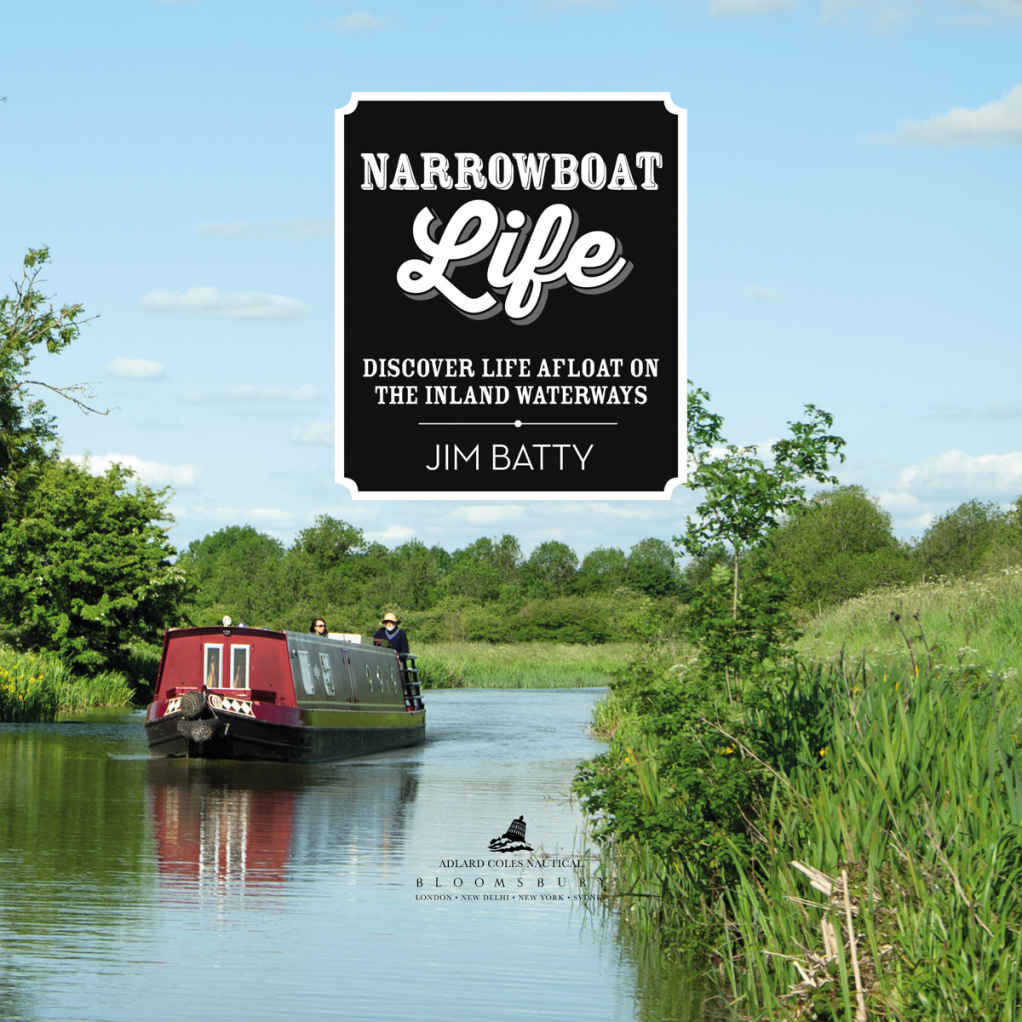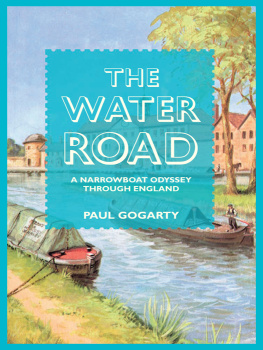
For Karen
Love of my life, who throughout the writing and photographing of this book has acted as a sounding board, critical ear to sporadically read passages, honest eye to a myriad of pictures, and enthusiastic supporter at every bend. What a happy adventure this life together has been! Long may it continue.
CONTENTS


Narrowboat at the end of the rainbow, Great Bedwyn, Kennet & Avon Canal.
L iving and cruising aboard a narrowboat within Britains intimate inland waterways is a special way of life. If you are up for it, each season can become a great adventure. Living afloat often feels like cheating at ordinary life and it is a common sentiment among liveaboards that moving back on to land is difficult to imagine.

Entering a lock standing on the cabin roof requires expertise and clear communication with the helmsman, near Wilton Brail, Kennet & Avon Canal.
When you live aboard a boat you can choose your view and change it as you like. Of course, it helps if you enjoy waterside scenery! If you like variety in your company, the waterways offer a genuine, helpful and enormously interesting and diverse community. If you value independence, you will find scope for expressing it in spades. If you enjoy the outdoors, or pine for the countryside, you will discover it right there outside your portholes and one step from your deck. And chances are that making a boat your home will lessen your impact on that beautiful environment, almost by default.
The boating life usually requires you to expend a bit more physical energy than you would living on land, something most boaters consider a good thing. Driving the boat and taking it through locks requires stamina, and at times a little extra oomph. As does relaying your groceries from a shop across town to the canal or river ... along the towpath ... and into your galley.
Continuously or intermittently cruising (as opposed to being permanently tied up on a fully-serviced residential mooring) is a form of living off-grid and requires a certain level of self-sufficiency to be viable and comfortable. Water and diesel tanks need to be routinely topped up, propane canisters replaced, waste emptied, electricity generated and the engine serviced. None of these things are beyond the wit and skill of anyone, it just takes a little planning.
There has recently been an increased interest in living on boats for economic reasons, especially as house prices continue to climb beyond the reach of many hard-working people. The fact that a second-hand boat can be bought for one-tenth of the price of a second-hand house makes you sit up and think. If you already own a property, the maths seem loaded in your favour if you dream of a quieter, downsized life. Of course boats are not houses, their value rarely increases, and living in a corridor-sized space seriously inhibits natural urges to consume your way to happiness.
I think my best advice would be: live on a boat only if you really want to live on a boat. That said, its difficult to know beforehand what this is like, so one of my aims in writing and photographing this book is to help you decide whether living afloat might be right for you.

A well equipped stern.
The big BOATY questions
T his book has been inspired by, and attempts to answer, a host of questions I have fielded from a huge variety of curious, excited, bemused and uncomprehending strangers, friends and colleagues about what its like to live on a narrowboat. After six years of cruising and living aboard a 53-foot narrowboat it has been fascinating to discover that the same core questions surface time and again. I have also found it thoroughly satisfying that many of these inquiries are not of the sensible how-to-do-it variety, but playful, whimsical, even sceptical queries about the waterways lifestyle that reveal genuine insight.

Widebeam reflected in the cabin side of a narrowboat at West Mills, Newbury, Kennet & Avon Canal.
There is the near-inevitable, Is it cold in the winter? It seems that half the population worries about being chilly, damp and miserable aboard something akin to a floating tent. This is counterbalanced by the cheeky, if observant, Why do women do all the work? Then there is the wary, Is it safe to live on a boat? and the down-to-brass-tacks question, How much did you pay for your boat? (or, more tactfully, Whats a narrowboat worth?). But there is also the spontaneously gleeful, Does he live on the boat?! (pointing to your cat, dog or parrot). A surprising number of aesthetically-knowing towpath wanderers ask, Did you paint the boat yourself?, while those concerned about the environment often enquire, How green is it, actually, living on a boat you run big diesel engines dont you? Finally, there are the canny continuously cruising-related questions, such as, How do you receive your post? and How do you hold down a job if you are always moving? Read on, for all will be revealed.
More generally, towpath passers-by have also expressed curiosity about what narrowboats are physically like on the inside. How are the rooms laid out? Do you have proper appliances? How does everything you own fit into such a small space? To address these sorts of questions I approached a variety of liveaboard narrowboaters with beautiful and interesting boats, to see if they would be willing to talk about their boats interiors and clever features, and how their layouts supported their different lifestyles ... and allow me to photograph their floating homes to show off to the world!
Well, I think it is a tribute to the friendliness, goodwill and flexibility of liveaboard boaters that everyone I asked was thrilled to invite us aboard to give us a peek behind the portholes. For this I will always be grateful, and I am really excited to include them in the special Step Aboard... sections. I have also included an inside view of our own modest 53-foot narrowboat, to demonstrate how liveaboard space can be truly maximised. I hope you enjoy your visits.
The inland waterways are home to a variety of fascinating liveable craft. My experience is of narrowboats, but most of what you find here can be equally applied to living on and evaluating widebeams (wide narrowboats), motor cruisers and small Dutch barges.

Approaching Blake's Lock at Reading, where you leave the River Thames for the River Kennet, and the Kennet & Avon Canal.
The QUEST for a LIVEABLE boat
M y partner Karen and I enjoy our narrowboat as much now as we did during those fresh autumn days when we first moved on board. We spent four years looking at second-hand boats before finding



















